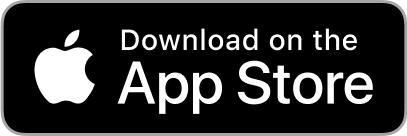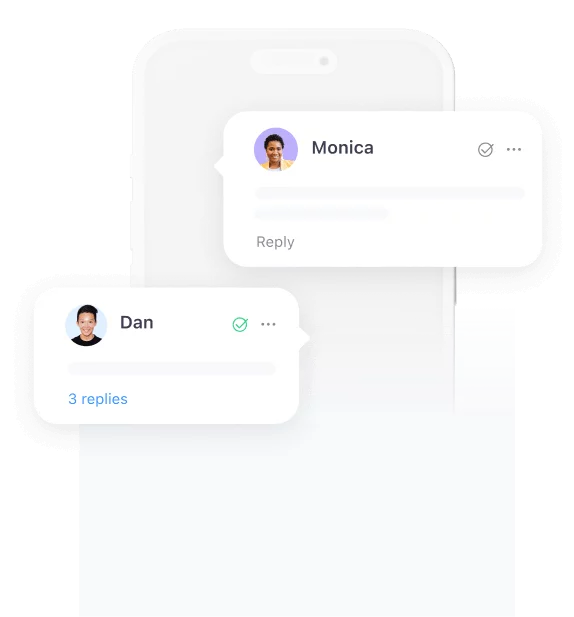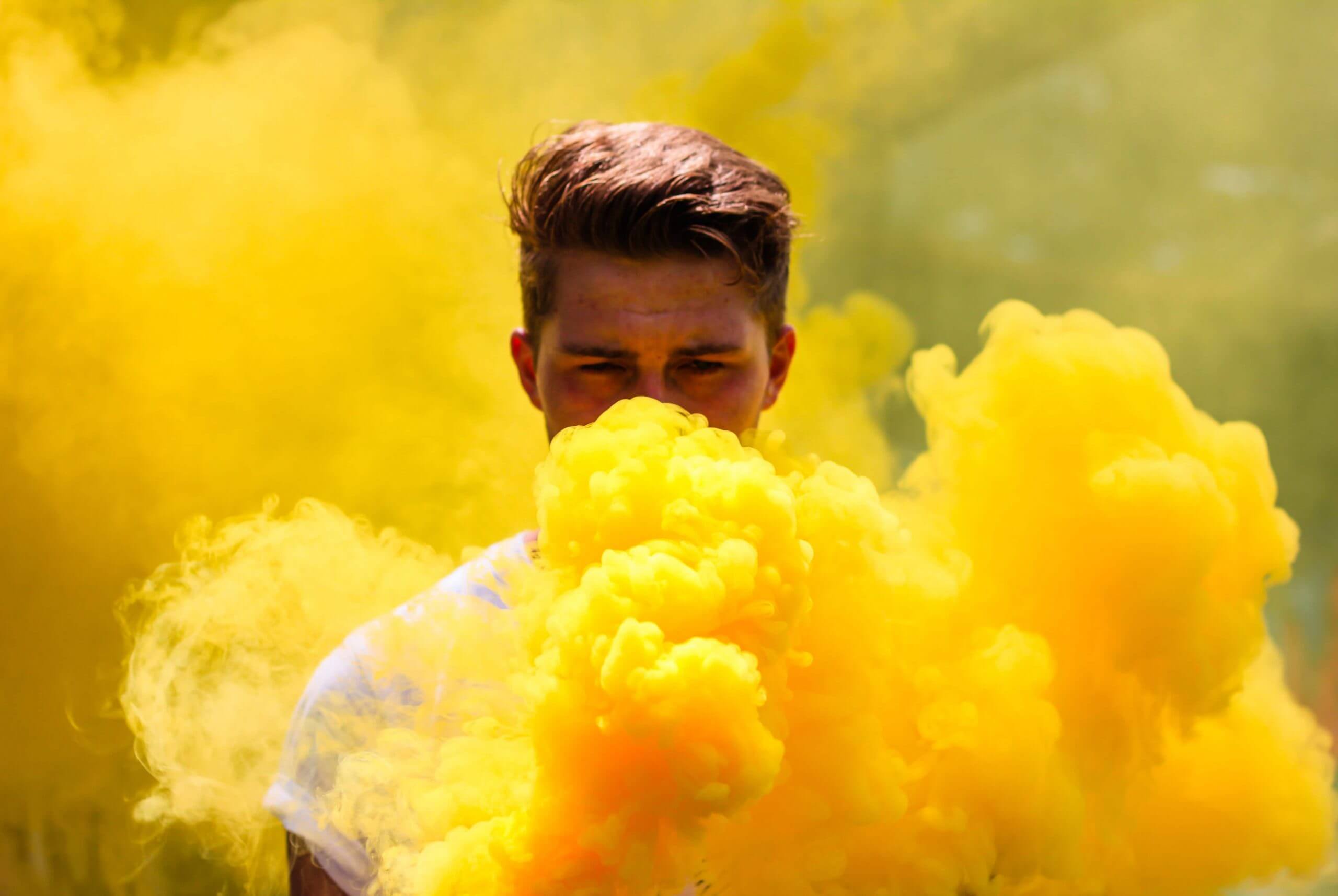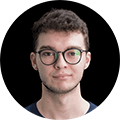What are some common social media myths that you’ve heard about? I’m sure you have dozens of examples in your head. We’ve all heard of freelancers or professionals in agencies believing in things that currently fairytales. We see people coming in this field, believing in yesterday’s social media myths.
Facebook surpassed the 2B active users and Youtube, Whatsapp, Instagram are growing rapidly. We clearly understood that social media is here to stay. Snapchat thinks it’s time for a change and announced that it’s separating social from media. Clearly, we see lots of differences between the social media sites. But some social superstitions lasted, since the day we just saw the boom of it.
We’re here to break the most popular beliefs of social media myths and break them for once and forever.
Google Plus helps my SEO
We’ve picked up dozens of stories, debates and folks arguing that Google Plus helps your SEO. It improves your content outreach, gets more traction to your website or blog. Gives you more visibility in search engine optimization and your links get indexed faster than you’ve ever thought. I bet you did attend to events that tried to convince you that you have to use Google Plus for your social media management. It’s true, some brands still keep their presence on this social media sites for their content marketing strategy.
It looked very promising, but nobody’s interested in Google Plus anymore. Already in 2015, we’ve seen that the number of active users is less than 1% of the total 2.2B users, according to this source. Youtube no longer asks you to create a Google Plus profile to sign up, and hangouts were easily replaced by Youtube Live. The evidence is here, the low number of active users and engagement gives us the answer, Google Plus is dead.
When it started, it was being told by major social media marketing publications that content published on Google Plus has more chances to end up in search results. Because Google owns this social media account, shares the metadata along with images, profile picture, media file and shares the same information across the whole the social media strategy. Indeed, Google Plus had a great potential into becoming a mainstream in the SMM. Especially for strong SEO and a great instrument for brands, small and medium companies and personal branding.
FOMO Google Plus
Even some of the most once active and popular brands on Google Plus are there only for cross-posting and Fear Of Missing Out. Even brands like Ford, H&M, Pepsi, Christian Dior, Van Gogh Museum, NASA don’t use Google Plus in their social media management. Now, let’s ask this question again, is Google Plus dead? I think it is. It doesn’t help you, boost your social presence or gets you any customers, because there isn’t anyone.
KEY TAKEAWAY, why would you focus any effort on a social media site that nobody uses and where there are no active users at all. Unfortunately, Google Plus won’t boost your search results for your blog, website or give you any visibility for your brand.
Best Time To Post On Social Media is 8 PM
Okay, it’s enough listening to this social media myth anymore. We’re here to rip it apart. At Planable, we’re talking every day with social media agencies, online marketing professionals, and freelancers in the marketing space, in London at our HQ. We all agree, most of the time, that there is no universal time and day for your posts. There have been more than 20 studies published in the last year, by Hubspot, Buffer, Fast Company.
We think Buffer’s ideal time for scheduling doesn’t make any sense. Because there is no ideal time frame or day of the week to publish your content. Yes, there are some time highlights that can significantly help improve your reach to the audience. But it won’t work every day the same and especially every month. Time, audience and even algorithms change. It’s completely unnecessary to think about the time and date of publishing your content. All the major platforms passed to a ranked timeline instead of the chronological feed. We said farewell to that looong time ago.
Social media site won’t show you the content posted 3 or 7 minutes ago. Instead, you’ll see only the relevant (as they think). With Facebook testing the new Explore feature, it will be even more complicated to think of publishing, as a universal time.
Facebook, uses several data points to predict and rank your social media content in the newsfeeds.
Things like page and brand, how frequent page shares the content, the average time between posts, previous feedback. Reactiveness on the posts and if it’s informative, engaging or emotional. Friends, comment, like, tag from a friend or your network, shared by your friend. Content, what type of posts it – image, video, GIF, carousel, canvas, what does the post describes. Engagement, how engaging are previous posts, how active the page is, reactions to the posts. Predictions, how likely are you to spend more than 3 seconds on the posts, how credible the page is. How interested you are on the page and chance to click on the post.
Facebook uses all these data points to share content in your newsfeed. One more thing, remember that Facebook shows your posts only to 3 – 5% of your audience. Twitter’s posts are active only for 20 minutes and 70% of Instagram posts don’t even get seen.
Every page has their specifics based on the audience.
The beauty of social media marketing is that there is no universal time to publish content, day to share the news or even number of posts you have to put on your pages. Everyone is on social media and it matters if your brand is there for political campaigns, tech content or to raise funds on Facebook, because each audience has its own behavior. You can always bring your page to life, by using ads, and you can always A/B TEST. See if maybe, there is a great portion of time, that can work for you. Some page is more engaging in the morning on Friday. Other ones on Tuesday in the evening and some brands mention that they have high engagements on week-end, publisher have better reach on rainy days. Again, it all depends from one page to the other one, and if you see a pattern, think what made it possible.
KEY TAKEAWAY, don’t make a treasure hunting to find a universal time and date to publish your posts. It will take you weeks of testing and very low results, instead focus on creating great content. Constantly improve the copy and analyze what works better for your specific audience.
Do More Followers Bring More Sales?
“If I’d have thousands of followers, sales would come” I’ve overheard someone saying this at a social media event last week. We’ve definitely seen an enormous number of brands and profiles sharing the #f4f #l4l and other hashtags to artificially grow their fan base. Why artificially? Because the only thing it will do for their social media profile. It will only attract bots and fake profiles. You’ll never see them again on your page, no more likes, comments and follows from them.
Like and followers are like Magna Carta of many social media managers. They believe this matters most and it’s most important metric they should follow. And it’s easiest one to show to your boss. “You see? We have 10 more likes than last week, hooray.” As a social media agency, it comes naturally to justify your results to the client based on these metrics. Sadly they’re just vanity metrics, like visitors on the website. They are not leading members and they’re just “cute” numbers we can see.
What matters in social media campaigns?
Certainly not the number of your followers, you have to create and engage conversations on the social platforms. Talk With your audience, not only To the audience. Analyse what are the real metrics that will significantly grow and improve your business. As a result, you’ll turn into a Data-Driven Social Media Marketing professional. Keep in mind that not everybody who “likes” your brand actually is interested in your brand. Maybe they made a mistake when clicked or tapped the like button? Of course, they count as fans of your page, but lots of “fans” don’t even see your posts. Unless they are really engaging and it’s a quality post. One engaged follower is worth 10 of them, try to work with them.
KEY TAKEAWAY, it’s not about the number of followers, as it is about the quality and who in the end are these followers. If they are your perfect audience and participate in your content. Create great content and look at the metrics that will help you see the brand growing.
Social Media is Free
Completely agree, not arguing on this point, but here comes another social media myth. It’s free to sign up on all major platforms today. You don’t have to pay to get the access to any social media accounts, create your personal profile, add your company, create a business page and add all the information about it. It’s really hard today to promote your brand on social media. Now that Facebook is constantly changing its algorithm and adding new types of content. We have to constantly create new content. If we want our audience to see them, then there’s only one solution “Pay to Play”.
Ads populated most of the online marketing space today.
When having a meeting in the social media team, for example, we don’t have disputes on should we boost this post or not? The main question today is – how much should we add to our Paid content for the next month? In fact, during the last 6 months, we spoke with more than 200 of the best social media agency in London. They witnessed us that clients don’t pay attention to organic content anymore. What interests them more is the Ads space. Everything goes to paid. Impressive, huh?
We have to think of social media marketing as a long-term investment in our online branding. The more you pay, the more you will improve in ROI. Sean Gardner (@2morrowknight) says that “Social media is not just an activity; it is an investment of valuable time and resources. Surround yourself with people who not just support you and stay with you. But inform your thinking about ways to WOW your online presence”.
KEY TAKEAWAY, you can create content, it’s completely free. But today social media content needs a boost to show it to more uses of your audience. That’s why you have to prepare marketing budgets for promotion expenses on all major social marketing platforms.
All social media sites are the same
One more misconception in our basket is about different behavior and audience on social media accounts. It’s extremely hard to fully understand every social networking website. Lack of knowledge and deep understanding of every factor and how it behaves, makes us think there are no major differences between them, cause there’s content everywhere, it’s just different. Well, that’s the key.
On social media, you’re communicating. You can publish all types of content in the world – images, videos, eBooks, white papers, infographics, and more – trying to engage with your audience differently. With social media marketing, there needs to be a mix of everything – listen, engage, discuss, cheer up and contribute to content.
Bonnie Sainsbury (@bsainsbury) “Social media will help you build up the loyalty of your current customers to the point that they will willingly, and for free, tell others about you.”
KEY TAKEAWAY, not all social media sites are the same, many marketers check the task, then they cross-share content between the platforms. But they’re not considering the specifics of each, as the size of the image, type of the content, content, how people speak and the actual content. If it’s engaging and is a fit for the platform.
Use All The Hashtags!
Remember that meme? Alright, let’s pass to our last social media myth for today, this time it’s about the #hashtags. I have a feeling that the world is split between people who #love hashtags and the ones who #hate hashtags and can’t see them anymore, especially because they don’t even work on Facebook. Yes, they do work on Twitter, Instagram, and Tumblr, like they’re supposed to.
When used incorrectly, hashtags can even damage your engagement. According to Sprout Social, on Instagram, the story is different. The more hashtags you use, the more engagement you see. However, after about 10 hashtags, you risk losing out on some of that engagement. It’s still a social media myth that hashtags are boosting your profile, for Facebook and Twitter, it definitely doesn’t work. Again, it’s about the conversations you create.
Don’t just put the hashtags randomly.
Analyze, check and see which works better for your content. Here are some tips how to get better at adding hashtags to your content. Be precise and specific when you’re adding the #. Engage in the communities you want to be heard, ones that share the same views and values of your brand and personality, more specific the hashtags are, better engagement will you receive and your account will be more discoverable by the peers on social media sites. While hashtags have the same functions on different social media accounts, they work differently on social platforms. Hashtags are often focused on the content of the media file or text that the user is sharing. You can use hashtags on Twitter to engage in conversations that have specifics topics, and Twitter chats, that is becoming really popular lately.
Come up with your hashtag. Often, a hashtag becomes popular because of an event, idea, person or something meaningful behind it. Branded hashtags don’t have to be exactly like the name of your brand, but they should represent something that you believe in or relevant name for your campaign. You can create a branded hashtag for a product launch, contest, event or a new campaign. If you promote the hashtag great, it will come up in the trending hashtags, which will higher the chance for better promotion.
To create a branded hashtag, make a shortlist, search for hashtag variations, research across all social media sites, if there are already existing competitors using this one, think what do you want to accomplish with this hashtag, set objects and stick to it.
KEY TAKEAWAY, hashtags should be used wisely, don’t overuse them. You should research the hashtags, use branded ones and always test which one works better.
Conclusion
One of the greatest things about social media marketing – it’s the constant change in the industry. We have to stay up to date every single day of what’s happening here: read the news, research blogs, search for ideas, follow experts on Twitter, come to social media events and conferences, engage in conversations with professionals, create and analyze your content.
We know it’s a lot to process about these social media myths, and it’s hard to understand how this works. Sometimes, we get ourselves out of the loop, trends pass next to us, people are tweetings of something we didn’t even hear about. And you get stuck on content, that’s not getting you anywhere. Don’t worry, things will get better.
We’re always here to help, subscribe to our Planable Blog below, to stay always up to date on the latest events in social media marketing and online marketing. If you think we missed something, comment below or shoot me a message on Twitter or here.
Dropped out of college, moved to another country with 2 of my friends and built Planable (Techstars London ’17), social media collaboration platform, at 19 y. o. Forbes 30 under 30






